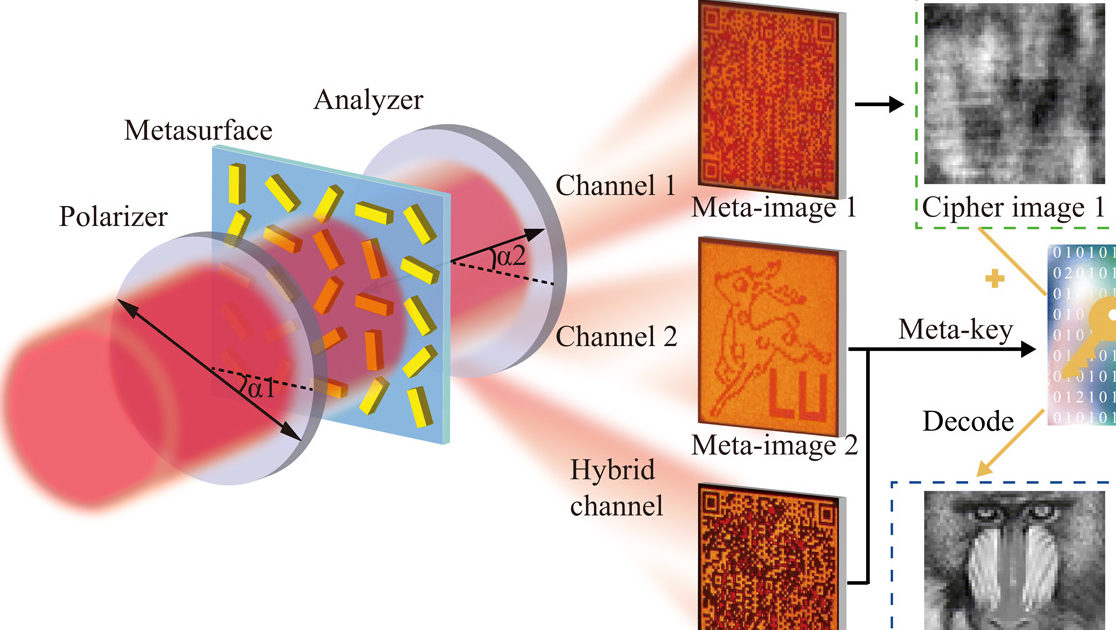A joint research team, formed by DPC and IAMPE joint assistant professor of the University of Macau (UM), Wuhan University (WHU), Beijing Normal University (BNU), the University of Hong Kong (HKU), and the University of Birmingham (UB), has proposed a groundbreaking image encryption scheme that uses a single metasurface as a reusable generator of different keys to encode various secret images in a computational way. The study has been published online in Science Advances, a sub-publication of the prestigious international journal Science.
Information security is of great importance in all aspects of life, and the need for enhanced information security has spawned various encryption methods. In almost all encryption techniques, a piece of information or an image is first encrypted by secret keys into a ciphertext using a specific algorithm, and the information can only be decrypted correctly if all the keys, ciphertext, and algorithm used in encryption are obtained. Therefore, the encryption algorithm, as well as the presence and form of transmission of the keys and ciphertext are all critical to the security of an encryption scheme.
Prof Liu Hongchao, Joint assistant professor of UM’s Institute of Applied Physics and Materials Engineering (IAPME) and DPC of FST, and his team, used a metasurface the size of a cross-section of a hair to generate a QR code, and by scanning the QR code, they obtained the ciphertext. According to Prof Liu, the QR code itself can generate different secret keys with different mathematical operations to complete the decryption process. One only needs a smart phone and a tiny metasurface to achieve the encryption and decryption of different secret images, which promises practical applications of metasurfaces such as mobile encrypted payment and information anti-counterfeiting.
This finding is broadly reported in Macau, including University of Macau, Macau News Bureau (澳門新聞局), Macau Government Portal (澳門特區政府網站), 今日頭條, 捷報, etc
The full text of the research article can be viewed at https://advances.sciencemag.org/content/7/21/eabg0363.


